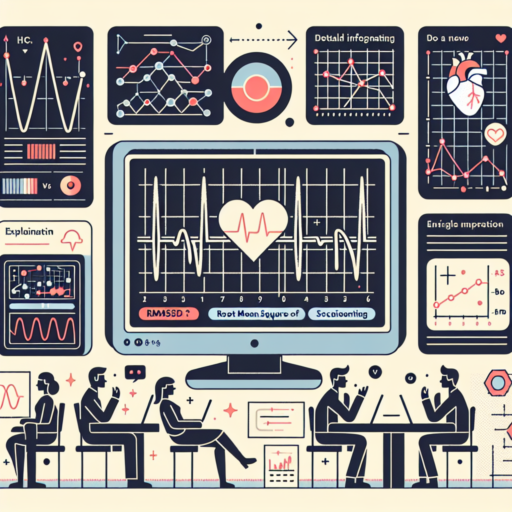No se han encontrado productos.
What is a good HRV rate?
Understanding what constitutes a good Heart Rate Variability (HRV) rate is crucial for monitoring one’s health and wellbeing. HRV measures the variation in time between each heartbeat, which is controlled by the autonomic nervous system. It reflects the body’s ability to manage stress, recover, and adapt. Generally, a higher HRV indicates better cardiovascular fitness, stress resilience, and overall health.
A good HRV rate, however, is relative and can vary significantly among individuals. Age, fitness level, lifestyle choices, and genetics all play critical roles in determining one’s optimal HRV range. For adults, an HRV in the range of 20-100 milliseconds (ms) is considered normal, but athletes and physically active individuals might exhibit higher values, suggesting a more resilient and robust autonomic nervous system.
To accurately gauge what a good HRV rate is for you, it is essential to monitor your HRV trends over time rather than focusing on isolated readings. Consistency in your daily HRV measurements can offer insights into your health and help tailor lifestyle choices that boost your HRV. Moreover, engaging in regular physical activity, practicing mindfulness, and ensuring adequate sleep are all strategies known to improve HRV.
What should my HRV be for my age?
Understanding your Heart Rate Variability (HRV) is crucial for monitoring stress, recovery, and overall cardiovascular health. The question «What should my HRV be for my age?» is a common one, as HRV can significantly vary not just from person to person, but also with age. Generally, HRV decreases as you age, indicating a lesser variation between heartbeats and possibly a need to pay closer attention to your heart health and lifestyle choices.
There are average HRV range benchmarks based on age groups which can provide a guideline. For instance, younger individuals tend to have higher HRV compared to older adults. This isn’t to say that a lower HRV is an immediate cause for concern, but understanding where your HRV stands in relation to your age can be a good start in managing your health proactively.
It’s essential to utilize a reliable and consistent method for measuring your HRV to ensure accurate comparisons over time. Remember, factors such as stress, sleep quality, physical activity, and even hydration can all influence your HRV readings on a day-to-day basis. Considering these variables can help in making more accurate assessments of your heart’s well-being in conjunction with your age-related HRV benchmarks.
What does HRV really tell you?
The question of what HRV really tells you is pivotal in understanding the nuances of personal health and performance monitoring. HRV, or Heart Rate Variability, is a critical indicator of the autonomic nervous system’s functionality, particularly reflecting the balance between the sympathetic and parasympathetic nervous systems. It’s a window into our body’s capacity to handle stress, recover, and adapt to changing environments.
At its core, HRV measures the time variation between heartbeats, which should vary and be irregular under healthy, unstressed conditions. A higher HRV suggests a more adaptable heart and nervous system, ready to efficiently manage stress and recovery. Conversely, a lower HRV indicates a potential state of stress, fatigue, or overtraining, signaling that the body may need rest and recovery. This insight makes HRV an invaluable tool for athletes, fitness enthusiasts, and anyone interested in optimizing their wellness and performance.
Integrating HRV monitoring into daily life can provide actionable feedback about your lifestyle choices, from sleep quality and physical training loads to stress management and mindfulness practices. By understanding the implications of your HRV readings, you’re equipped to make informed decisions that enhance your overall health and resilience. It’s a strategic step towards personalized health optimization, tapping into the power of biofeedback to fine-tune your body’s response to life’s demands.
What level should HRV be?
Determining the ideal Heart Rate Variability (HRV) level is vital for assessing overall well-being, fitness, and stress levels. However, it’s crucial to understand that HRV is highly individualized. What might be a healthy HRV level for one person could be different for another due to various factors such as age, fitness level, and health status.
Typically, an HRV score ranges from 20-200 milliseconds (ms). Generally, higher HRV numbers indicate better cardiovascular fitness, resilience to stress, and overall health. Athletes often exhibit higher HRV levels due to their heightened fitness levels and increased heart efficiency.
It’s essential to monitor your HRV trend over time instead of focusing on isolated readings. Observing trends can help you understand how your lifestyle, exercise routines, and stress management practices affect your HRV. This approach can guide you to make healthier choices tailored to improving or maintaining an optimal HRV level for your specific health and fitness goals.




